- Home
- Glynn Stewart
Drifter's Folly (Peacekeepers of Sol Book 4) Page 22
Drifter's Folly (Peacekeepers of Sol Book 4) Read online
Page 22
Squadron maneuvering plans were the responsibility of Eowyn’s Operations department, but the problem with running a destroyer squadron was that Henry’s flagship didn’t have the space for a large support staff for the Commodore.
He wanted the Ops team on the analysis, which meant he didn’t want them drafting the course—and he had three competent Nav departments to lean on.
“On it,” both officers confirmed.
Henry exhaled a breath, watching the icons on the screen.
“What were you thinking?” he murmured. “What are you thinking…”
“Contact!”
The shout was from the destroyer’s bridge, carrying through Henry’s link with Ihejirika by sheer volume.
“Multiple contacts, vampire, vampire—no, mines. Mines at thirty degrees by forty-five degrees, danger close!”
Henry swallowed a curse as a pox of new red icons flashed onto the display. Mines were only useful if you knew exactly where the enemy was going to be—but the Drifters had known he was following their trail and had guessed when he’d detect the point where they’d started concealing their path.
They’d got his vector wrong, both because he’d delayed giving the order to break off and because his sensors were better than they’d expected, but they hadn’t needed to get it that right.
Not with bomb-pumped X-ray laser mines.
“Lasers on the shields,” Eowyn snapped. “All ships evading; all ships reporting laser strikes.”
The red icons rippled on his screens, vanishing in sequence as they detonated and flung devastatingly powerful beams at Henry’s ships. The range was barely fifty thousand kilometers—but if it had been half that, Henry’s entire command would have died.
“Report,” he finally ground out.
“All ships still reporting in,” Chan said. “Maharatha is reporting a hull strike. Damage report incoming.”
“Cataphract and Paladin report zero direct hits,” Eowyn continued. “Cataphract took a glancing blow that burnt off some heat radiators. Drones are deploying replacements.”
“Direct channel from Captain Teunissen for you, ser,” Chan told Henry.
“Put her through directly to my network,” Henry ordered. “Eowyn, I want a full sensor-drone spread. That’s an opening salvo; they did not expect it to finish us off.”
An image of Lieutenant Colonel Nina Teunissen’s squat visage appeared in front of Henry, projected directly to his mind by his internal network.
“We got handled rougher than I like,” she said without preamble. “I’m down a missile launcher and Laser Two. My chief engineer thinks he’ll have Laser Two back online, given thirty minutes, but the launcher is just gone, ser.
“Eleven confirmed dead so far, but I’ve got twenty wounded and we’re still searching for ten more,” she concluded. “It’s bad, Commodore.”
“Understood. Tell your chief he’s got ten minutes for that laser, maybe,” Henry said grimly. “I’m expecting hostile contact in short order. Shield and GMS status?”
“Hundred percent still,” Teunissen replied. “I’ll tell the chief, but…”
“It will take what it takes,” Henry conceded. “But we’re going to need that laser sooner rather than later, Captain. Tell him.”
“Yes, ser.”
Teunissen’s image vanished, and Henry looked at the screen, searching for what he knew had to be there.
“Drones have them,” Eowyn quietly reported in the silence of the bridge. “Six escorts and a Guardian advancing out of the asteroid belt. Probably took them this long to bring their engines up from dead cold.”
“Understood.” Henry swallowed a breath. “Formation Delta-Six. Maharatha on the point. All ships clear for action.”
Chapter Thirty-Seven
“Formation Delta-Six” was one of many variations on a basic triangle formation—like the Greek letter it was named for, Δ. Delta-Six was ecliptic relative to the enemy, with the base of the triangle pointing toward them.
That put the third ship, Maharatha in this case, behind the other two and mostly protected by their gravity shields. Maharatha would still be able to launch missiles, but she’d have a degree of protection from enemy fire.
“Range is seven hundred thousand kilometers,” Eowyn reported as the UPSF ships rearranged into formation. “Our current velocity is four hundred kilometers per second away from them; they are closing at one-point-five KPS-squared.”
Henry nodded, taking in the battlespace without giving orders for the moment. Their velocity away from the asteroid belt and the Drifters put them out of missile range, and he could keep it that way if he chose.
But that wouldn’t provide him with answers or let him investigate the Convoy’s trail. A Guardian and six escorts were a hell of a weight of metal, but he had gravity shields and they didn’t.
“Adjust course to take us in to meet them,” he ordered quietly. “Maximum missile range.”
“We’ll cut accel in eighty seconds, remaining velocity ninety KPS,” Eowyn told him after a few seconds. The destroyers were now “falling” toward the Drifters. “Range will be seven hundred twenty-three thousand, but with the reduced separation velocity, the missiles will have range.”
“Understood.” He studied the tactical plot. His destroyers didn’t have quite the payload options his battlecruiser had possessed. Without the spinal gravity driver, their missiles couldn’t guarantee the velocity for the hard-tipped armor-piercing rounds Raven had carried for her main gun.
Instead, he had conversion warheads—which used shaped fusion charges to create massive plasma shotguns in space with a terminal range of hundreds of kilometers—standard five-hundred-megaton fusion bombs and shield-penetrator missiles.
The last were intended to jump past gravity shields to deliver five-hundred-megaton warheads but also worked effectively on energy screens—like the ones the Guardian would be carrying. The escorts would be unshielded…unless the Drifters had bought the Eerdish’s new shield generators.
“Sylvia,” he pinged his lover. “Did we find out whether the Eerdish had sold the Drifters shield generators?”
“They dodged the question,” she admitted. “Which I take to mean ‘Yes, they did.’ Probably only a few, though, enough that they can replicate them eventually.”
“But probably not enough to reequip an escort squadron in a few days,” Henry murmured, watching the seconds tick down. The first missiles in his launchers were conversion warheads. If he wanted to do something tricky, he needed to do it with his second salvo and decide before the first salvo launched.
“Eowyn, targeting and loadout orders,” he said clearly, pulling his Ops officer’s attention. “Designate the escorts one through six. Escort One gets the full first salvo from all three ships. All ships will then load with shield penetrators for three salvos, focused on the Guardian, then switch to conversion heads and return focus to Escort One.”
They’d be holding the range at a five-minute flight time. That meant he’d get five salvos into space before the first one landed. He’d reassess salvo six after he saw the result of his first salvo—and the Drifters’ first salvo.
“Passing the orders,” Eowyn confirmed. “First salvo launching in fifteen seconds. I expect the Drifter launch simultaneously.”
“Make sure nav orders are to reverse acceleration and match theirs at zero v,” Henry said quietly. The Drifters had likely expected to have an acceleration advantage over his ships. They’d already learned their error as his people closed at two KPS2, and shortly they’d see that DesRon Twenty-Seven controlled the range of this fight.
That was going to take away the Guardian’s biggest influence. The modular Drifter capital ship would have multiple superheavy plasma turrets, mounting the same weapons as a Kenmiri dreadnought, but they couldn’t hit his destroyers at seven hundred thousand kilometers.
Same with the lasers on both sides. Lucky hits were possible, but his gravity shields would shrug them off. This was going to be
a missile duel, with the question of whether DesRon Twenty-Seven’s gravity shields offset the fact that they had thirty-five launchers—and the Drifters likely had about a hundred and fifty.
“Launching,” Eowyn reported, new green icons appearing on Henry’s screen. Lightspeed delay meant it was several seconds before the red icons of the enemy weapons appeared. “Enemy launch detected. I’m reading an estimated one hundred fifty-five missiles. We will narrow down the numbers as they close.”
“Scan for radiation signatures,” Henry ordered. “We know the Drifters have resonance warheads, so let’s identify them. There should be fewer disruptors, so target them.”
The resonance warheads could set up a cascade that would collapse their gravity shields—but the Cataphracts had new and updated power breaker systems to reset their shields almost immediately, and the disruptor missiles didn’t have space for warheads.
In the worst case, his destroyers could take a kinetic hit to the hull. They couldn’t take a conversion warhead’s plasma blast to the hull. If it was easier to wipe out the conversion warheads, they’d risk the disruptors—but if there were more conversion warheads, they’d take down the disruptors and trust their shields to handle the plasma blasts.
“Second salvo away,” Eowyn reported. “Enemy second salvo detected.”
Both forces were now accelerating at one and a half KPS2. That meant that Henry’s missiles would hit before the Drifters’ missiles did, but it didn’t make as much difference as the base velocity could.
“Three minutes to impact,” the Ops officer noted.
It was very quiet on Paladin’s flag bridge, the air feeling chilly on Henry’s skin. He understood the logic of lowering the temperature of a ship at battle stations—if nothing else, it gave them extra thermal capacity aboard the ship if the heat radiators were damaged—but it still felt strange in the wait between battle being joined and the first blows landing.
“Drifters are maintaining course,” Eowyn said. “Chan, any coms?”
“Nothing,” the coms officer replied. “They’re not saying a word.”
“Rude of them,” Henry murmured. “Defensive nets are up?”
“All ships are interlinked; Tactical officers have the ball,” Eowyn reported. “We have IDed twenty disruptor warheads in the first wave. The salvo appears targeted on Cataphract.”
Henry nodded and said nothing. He’d given his orders and now it was down to the team around him. Lasers began to flicker in the display and red icons started to vanish. Maharatha was adding less to the shared defense than she would have in a different formation, but that was fine.
He’d allowed for that. The odds were that his ships could take half a dozen disruptor hits before their shields went down and hundreds of conversion-warhead hits before the statistical chance of a blowthrough caught up to them.
The Cataphracts had sharper gravity shears than the battlecruiser he’d conned at the end of the war. If the Drifters thought his destroyers were fragile, they were going to learn an unpleasant lesson today!
“Escort One took three hits,” Eowyn reported as their first salvo struck home. “She appears to still be fully functional.”
Henry didn’t say anything. His own focus was on the missiles plunging down on Cataphract. His three destroyers couldn’t shoot down over a hundred and fifty missiles. They had managed to shoot twenty-three, which was impressive on its own.
And now the moment of truth as the remaining hundred and thirty–plus weapons crashed over the destroyers like a tidal wave, warhead after warhead exploding and sending blasts of plasma into the gravity shield.
“All disruptors were down,” the Ops officer reported. “Cataphract is still with us.”
“Chan, what’s Palmer’s status?” Henry asked.
“She’s reporting a single minor blowthrough, no connection with the hull,” Chan replied. “No damage.”
“Good.” That was what he’d expected, but it was still nerve-wracking to watch that many explosions wash over a ship under his command.
“Tighten up the formation,” he ordered grimly. “Let’s get close enough to Cataphract to try to pull some of the fire onto us. We should be fine under hundred-missile salvos, but probabilities wait for no one.”
“Understood. Passing the orders,” Chan confirmed.
“First penetrator is skipping…now.” The shield-penetrator missile was an evolution of the skip drones that humanity now used for interstellar coms—and had used before encountering what they now knew was the Kenmiri subspace carrier signal.
The current use of skip drones for communications worried Henry. Their miniaturized skip drives were intentionally larger and cruder—and cheaper—than the ones used in the penetrator missiles, but the function was the same.
The penetrator missiles activated their skip drives as they plunged toward the Guardian’s shields. For a few seconds, they were twenty-dimensional objects instead of three-dimensional objects, offset from normal space by a few meters in dimensions that the energy screens didn’t enter.
Without the gravity of stars to pull them along like stones in a river, the missiles didn’t travel any farther in normal space than they normally would have—but they traveled that distance in a space where energy screens and armor didn’t exist.
Multiple five-hundred-megaton warheads detonated in the gap between the Guardian’s shields and its fragile, built-in-pieces hull. Atmosphere and vaporized metal gusted into space, but the battleship kept coming.
“That’s…interesting,” Eowyn murmured.
“Commander?” Henry snapped.
“The Guardian appears to have a secondary energy shield, right on the hull,” she reported. “It’s nowhere near as powerful, but it helped protect the hull from the close-range explosions from the penetrators.”
She shook her head.
“Our former allies seem to have picked up on our favorite tricks, ser,” she warned.
Henry grimaced—but that was all he had time for before the Drifters’ second salvo crashed in on Cataphract. Paladin had pulled away some of the missiles this time, with a dozen conversion warheads firing their plasma blasts uselessly into the shield of his flagship.
But two of the disruptor warheads had survived in this salvo, and they hammered into Cataphract’s gravity shield with their usual chaotic effect. Two resonance disruptors weren’t enough to bring down the gravity shield, and Henry was already dismissing the impact, turning to check on the next offensive salvo.
And then everything went to hell.
Cataphract’s drive went from running with the rest of the squadron at one and a half KPS2 to spinning in space with her acceleration wildly spiking in a dozen different directions.
Henry watched in horror as her drive repeatedly spiked to ten times her standard thrust and spun three hundred and sixty degrees. Red damage alerts flashed up on the screen and then it all stopped.
And so did Cataphract’s gravity maneuvering system. Her shield was flickering, the gravity shear badly reduced, but her drive was completely offline.
“Chan, get me Palmer,” Henry snapped. “Flip the delta; put Paladin and Maharatha in front of Cataphract. All conversion salvos to defensive mode. We cannot let any disruptors through.”
The conversion warheads weren’t designed for that, but they could do it. Retargeted by Eowyn’s orders, all but one of their in-flight salvos turned to immolate themselves against the Drifters’ missiles.
“This is Palmer.”
Henry exhaled in shocked relief when he heard Cataphract’s Captain’s voice.
“Report,” he snapped.
“We’re fucked,” she said bluntly, clearly in pain. “GMS doesn’t apply thrust, so no one got spaghettified, but tidal forces and…and vector shifts… I’ve got a lot of injuries and I don’t have damage reports.
“You may have to leave us, ser.”
“Not happening, Captain,” Henry snapped. “Focus on your GMS. This fight is over, but we can get out if
you get your engine back.”
“I’ll tell Vitalik,” she replied. “I don’t know what else we’ve got, ser. A lot of structural damage. She may be a write-off.”
“She’ll get you home, Captain,” Henry told her. “Nothing else matters.”
He looked up at the tactical display as his two remaining ships spat out twenty-three more missiles—these all with the icons of standard fusion warheads. They were overkill, but they’d thin the herd heading toward Henry’s ships.
“Ser, final salvo skipping,” Eowyn reported, her voice forced to crispness. “Impacts on the Guardian… We have an internal hit! She’s breaking up!”
Henry breathed a sigh of vindictive relief. That would buy time. Right now, his ships weren’t accelerating and the Drifters were starting to close the distance.
Not quickly. Not yet—but they didn’t have forever and he had to hope the enemy would hesitate now that Henry’s people had just obliterated their flagship.
“Ser, I’ve got a blip on Cataphract,” Eowyn reported. “Just a few gravities, but their drive is moving.”
The link to Palmer chirped alive a moment later.
“Commander Utkin is a miracle-worker, ser,” Palmer’s pained voice told him. “We’re bringing the GMS up slowly, but we think we’ve got her. What he’s warning is if we bring it to full power, we have to give up almost the entire shield shear. We don’t have the projectors for both anymore.”
“And weapons?” Henry asked. He could guess the answer.
“I don’t have the power for main lasers, and I’ve got warping in the launcher feed tubes. With all hands focused on the GMS, I don’t even have defensive beams online, ser.”
“Good enough,” Henry told her. “Set your course for our entrance skip line at the best accel you can pull. Rest of the squadron will match your acceleration and cover you.”

 Relics of Eternity (Duchy of Terra Book 7)
Relics of Eternity (Duchy of Terra Book 7)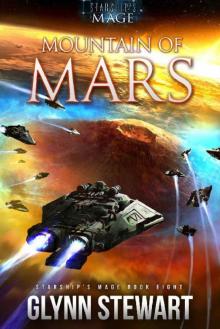 Mountain of Mars
Mountain of Mars Wardtown (Teer & Kard Book 1)
Wardtown (Teer & Kard Book 1) Noble's Honor (Changeling Blood Book 3)
Noble's Honor (Changeling Blood Book 3)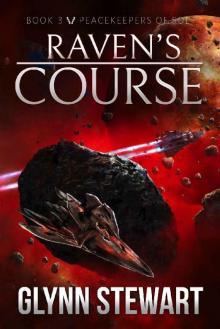 Raven's Course (Peacekeepers of Sol Book 3)
Raven's Course (Peacekeepers of Sol Book 3)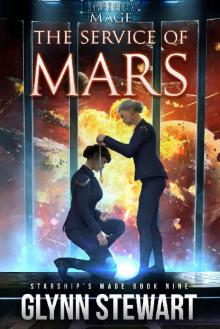 The Service of Mars
The Service of Mars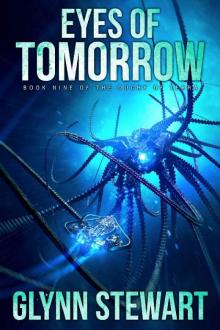 Eyes of Tomorrow (Duchy of Terra Book 9)
Eyes of Tomorrow (Duchy of Terra Book 9) Darkness Beyond (Light of Terra: a Duchy of Terra series Book 1)
Darkness Beyond (Light of Terra: a Duchy of Terra series Book 1)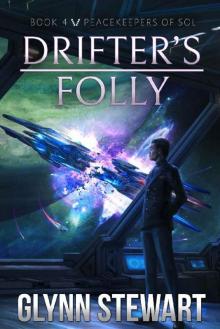 Drifter's Folly (Peacekeepers of Sol Book 4)
Drifter's Folly (Peacekeepers of Sol Book 4)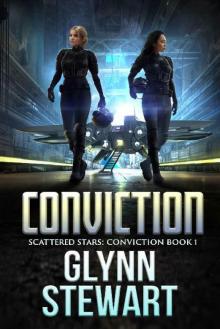 Conviction (Scattered Stars: Conviction Book 1)
Conviction (Scattered Stars: Conviction Book 1)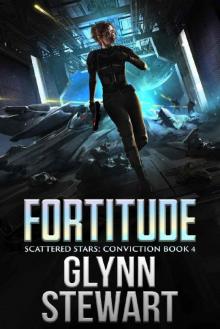 Fortitude (Scattered Stars: Conviction Book 4)
Fortitude (Scattered Stars: Conviction Book 4)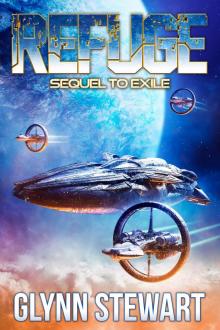 Refuge
Refuge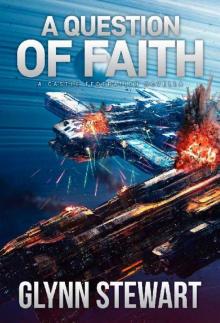 A Question of Faith: A Castle Federation Novella
A Question of Faith: A Castle Federation Novella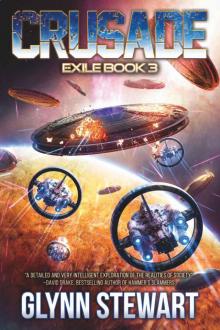 Crusade (Exile Book 3)
Crusade (Exile Book 3)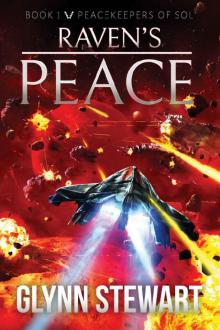 Raven's Peace
Raven's Peace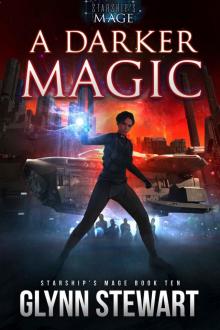 A Darker Magic (Starship's Mage Book 10)
A Darker Magic (Starship's Mage Book 10)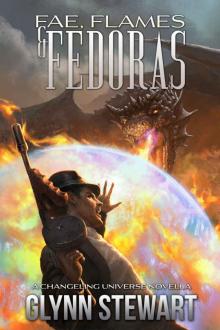 Fae, Flames & Fedoras
Fae, Flames & Fedoras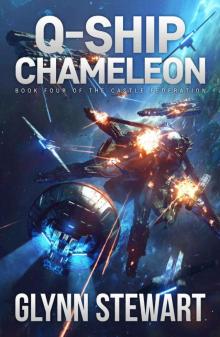 Q-Ship Chameleon
Q-Ship Chameleon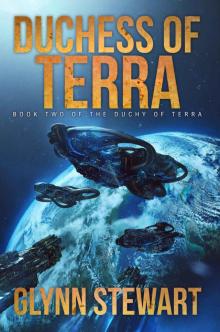 Duchess of Terra (Duchy of Terra Book 2)
Duchess of Terra (Duchy of Terra Book 2)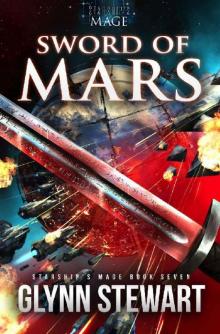 Sword of Mars
Sword of Mars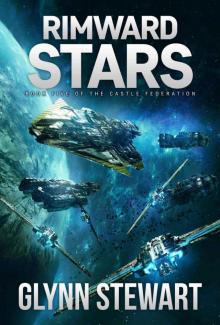 Rimward Stars (Castle Federation Book 5)
Rimward Stars (Castle Federation Book 5)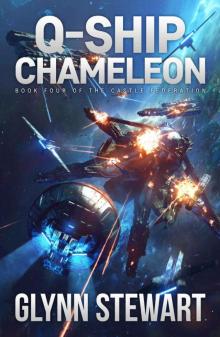 Q-Ship Chameleon (Castle Federation Book 4)
Q-Ship Chameleon (Castle Federation Book 4)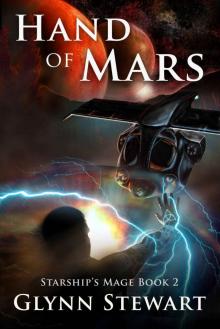 Hand of Mars (Starship's Mage Book 2)
Hand of Mars (Starship's Mage Book 2)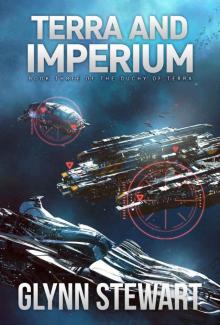 Terra and Imperium (Duchy of Terra Book 3)
Terra and Imperium (Duchy of Terra Book 3)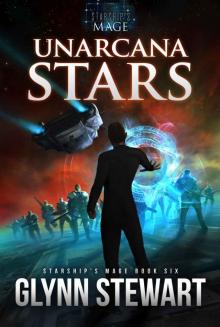 UnArcana Stars
UnArcana Stars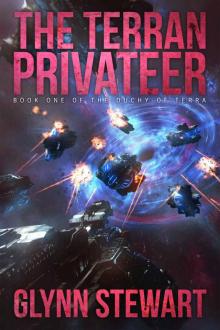 The Terran Privateer
The Terran Privateer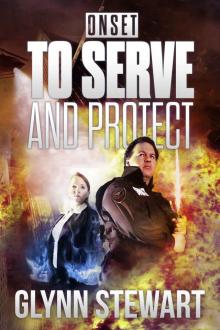 ONSET: To Serve and Protect
ONSET: To Serve and Protect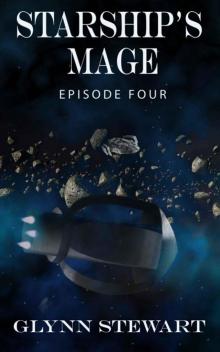 Starship's Mage: Episode 4
Starship's Mage: Episode 4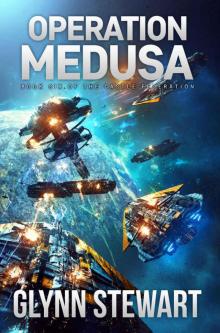 Operation Medusa (Castle Federation Book 6)
Operation Medusa (Castle Federation Book 6) ONSET: Blood of the Innocent
ONSET: Blood of the Innocent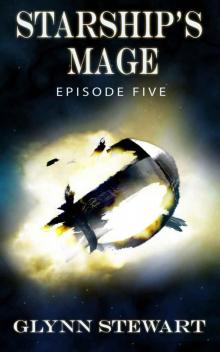 Starship's Mage: Episode 5
Starship's Mage: Episode 5 Hunter's Oath
Hunter's Oath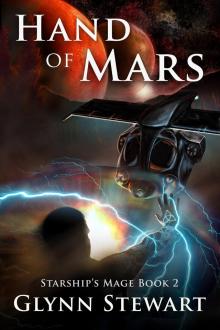 Starship's Mage 2 Hand of Mars
Starship's Mage 2 Hand of Mars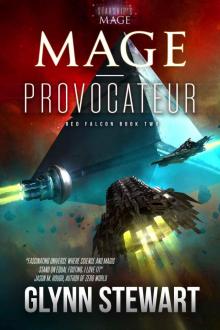 Mage-Provocateur (Starship's Mage: Red Falcon Book 2)
Mage-Provocateur (Starship's Mage: Red Falcon Book 2) ONSET: My Enemy's Enemy
ONSET: My Enemy's Enemy Blood Ward
Blood Ward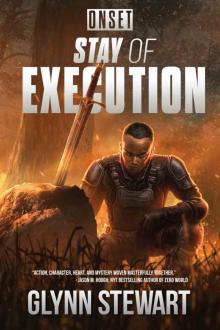 ONSET: Stay of Execution
ONSET: Stay of Execution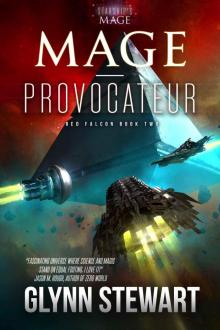 Mage-Provocateur
Mage-Provocateur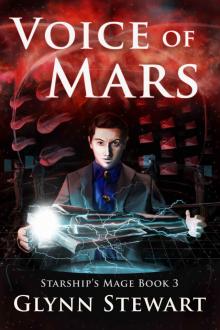 Voice of Mars (Starship's Mage Book 3)
Voice of Mars (Starship's Mage Book 3) ONSET (Book 4): Stay of Execution
ONSET (Book 4): Stay of Execution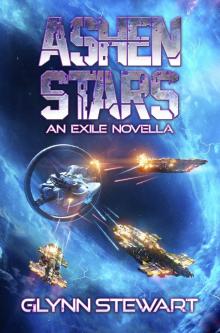 Ashen Stars
Ashen Stars Children of Prophecy
Children of Prophecy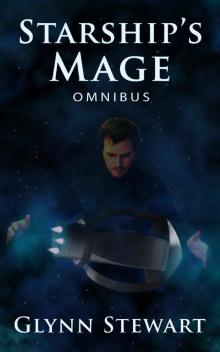 Starship's Mage: Omnibus: (Starship's Mage Book 1)
Starship's Mage: Omnibus: (Starship's Mage Book 1)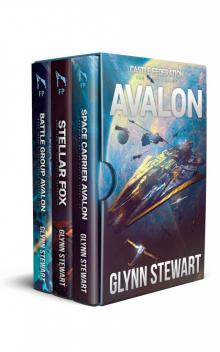 Avalon Trilogy: Castle Federation Books 1-3: Includes Space Carrier Avalon, Stellar Fox, and Battle Group Avalon
Avalon Trilogy: Castle Federation Books 1-3: Includes Space Carrier Avalon, Stellar Fox, and Battle Group Avalon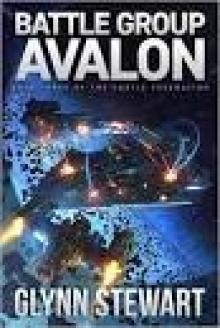 Battle Group Avalon (Castle Federation Book 3)
Battle Group Avalon (Castle Federation Book 3)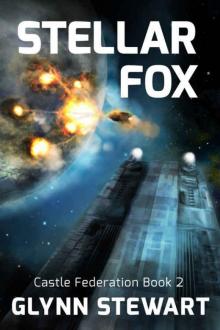 Stellar Fox (Castle Federation Book 2)
Stellar Fox (Castle Federation Book 2)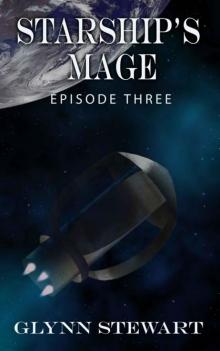 Starship's Mage: Episode 3
Starship's Mage: Episode 3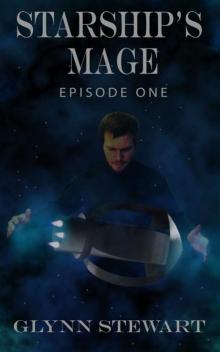 Starship's Mage: Episode 1
Starship's Mage: Episode 1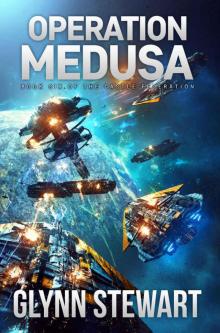 Operation Medusa
Operation Medusa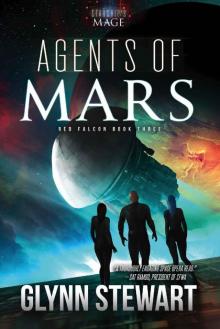 Agents of Mars (Starship's Mage: Red Falcon Book 3)
Agents of Mars (Starship's Mage: Red Falcon Book 3)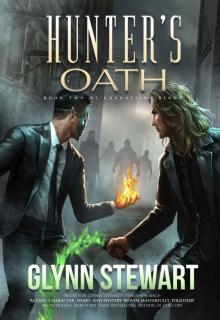 Hunter's Oath (Changeling Blood Book 2)
Hunter's Oath (Changeling Blood Book 2)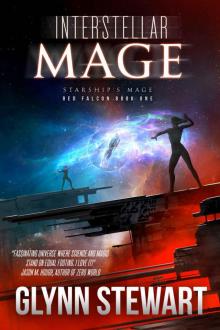 Interstellar Mage (Starship's Mage: Red Falcon Book 1)
Interstellar Mage (Starship's Mage: Red Falcon Book 1) Judgment of Mars (Starship's Mage Book 5)
Judgment of Mars (Starship's Mage Book 5) Alien Arcana (Starship's Mage Book 4)
Alien Arcana (Starship's Mage Book 4)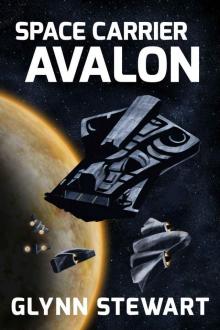 Space Carrier Avalon
Space Carrier Avalon Changeling's Fealty (Changeling Blood Book 1)
Changeling's Fealty (Changeling Blood Book 1)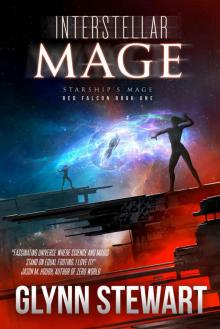 Interstellar Mage
Interstellar Mage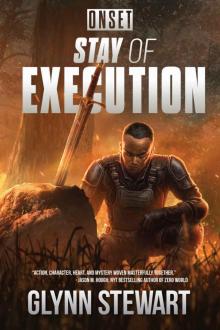 Stay of Execution
Stay of Execution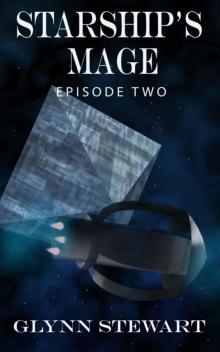 Starship's Mage: Episode 2
Starship's Mage: Episode 2